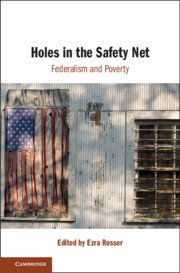Anthony V. Alfieri, Race, Legal Representation, and Lawyer Ethics (Apr. 2020) (https://ssrn.com/abstract=3590301). Abstract below:
Today, despite the progress of post-war civil rights movements and recent criminal justice reform campaigns, the legacy of racial bias endures inside American courtrooms across the nation. This legacy is seen in antebellum portraits of minorities (particularly Blacks) on courthouse wall murals and lineups of shackled juvenile prisoners, and heard in the racially charged trial remarks of prosecutors, the noxious opinions of criminal defense expert witnesses, and the prejudicial statements of deliberating jurors. Unexpectedly, that legacy of bias also persists inside civil rights law firms, legal aid bureaus, and prosecutor and defender offices. Given the pervasiveness of race in American law, we know surprisingly little about the variegated form, substantive meaning, and individual and collective impact of racial bias in legal representation, especially in the public law fields of civil rights, criminal justice, and poverty law.
For many years, I have worked and written in these same fields, incorporating research on the lawyering process, ethics regulation, and legal education into classroom teaching and community-based, antipoverty advocacy. The bulk of that prior writing critically maps the late twentieth century landscape of race and representation in American civil and criminal justice systems, searching out pathways of implicit and explicit bias. The purpose of this chapter is to revisit and extend this body of writing to contemporary civil rights, criminal justice, and poverty law practice, particularly the dilemmas that practitioners face in prosecuting, defending, and advancing the rights of indigent minorities. The goal in doing so is to better understand why and how prosecutors and defenders as well as civil rights and legal aid lawyers knowingly appeal to racial bias in their advocacy or engage in advocacy that ethics regulatory regimes like American Bar Association (ABA) rules and standards deem prejudicial to the administration of justice, for example, conduct that disparages, humiliates, or discriminates against litigants, victims, jurors, witnesses, or other lawyers.
More broadly, the goal of this chapter is to understand how a diverse group of public interest lawyers — antipoverty and civil rights advocates, prosecutors, and defenders — see, hear, and talk about race, notably the race and racial identity of indigent minority communities embodied in the day-to-day, sociolegal experiences of clients, accused offenders, and victims. What visual images and stock stories of race, for instance, do public interest lawyers employ in performing the functions of an advocate for the impoverished? What are the past and present sources of those images and stories? How do such images and stories construct the culture, social history, and identity of minorities? When do those images and stories engender racial bias and prejudice toward individuals, groups, and communities? Where do those images and stories predominate — courthouses, jury rooms, law offices? And who do they impact and harm — lone clients and offenders, neighborhood groups, whole communities? Last, why do ethics regimes like ABA rules and state bar codes permit lawyers to use such images and stories in their advocacy in spite of the palpable harm to individual, group, and community racial identity?
To pursue these interwoven lines of inquiry, the chapter proceeds in three parts. Part I examines the representation of race and poverty under a standard conception of the public interest lawyering process dominated by race talk and racial pragmatism. Part II considers the work of civil rights and poverty lawyers against this standard conception. Part III assesses the work of prosecutors and defenders against the same conception.





